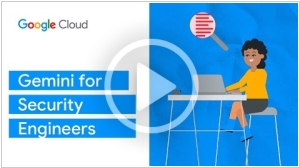Google Cloud Platform vs Microsoft Azure
August 19, 2023 | Author: Michael Stromann
16
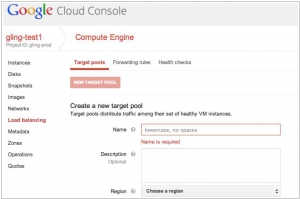
Google Cloud Platform is a set of modular cloud-based services that allow you to create anything from simple websites to complex applications. Cloud Platform provides the building blocks so you can quickly develop everything from simple websites to complex applications. Explore how you can make Cloud Platform work for you.
21
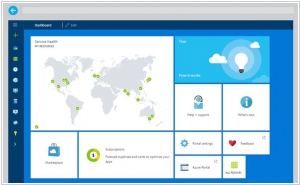
Microsoft Azure is an open and flexible cloud platform that enables you to quickly build, deploy and manage applications across a global network of Microsoft-managed datacenters. You can build applications using any alternative language, tool or framework. And you can integrate your public cloud applications with your existing IT environment.
Google Cloud Platform (GCP) and Microsoft Azure are two prominent cloud computing platforms, each with its own strengths and offerings. GCP emphasizes its expertise in data analytics, machine learning, and AI capabilities, with services like BigQuery, Cloud Machine Learning Engine, and TensorFlow. It also provides a strong ecosystem for containerization and orchestration with Kubernetes. On the other hand, Microsoft Azure offers a comprehensive suite of cloud services, including infrastructure, databases, AI, and IoT solutions. It leverages its integration with Microsoft's extensive enterprise software portfolio, such as Windows Server, SQL Server, and Active Directory, providing seamless integration for organizations heavily reliant on Microsoft technologies. Azure is known for its hybrid cloud capabilities, allowing organizations to seamlessly integrate on-premises and cloud environments.
See also: Top 10 Public Cloud Platforms
See also: Top 10 Public Cloud Platforms
Google Cloud Platform vs Microsoft Azure in our news:
2024. Google injects generative AI into its cloud security tools
Google has rolled out a suite of new cloud-based security offerings alongside updates to its existing lineup, targeting enterprises handling extensive, multi-tenant networks. Among these introductions is Gemini in Threat Intelligence, a fresh addition to Google's Mandiant cybersecurity platform, harnessing Gemini's capabilities. Currently available for public preview, Gemini in Threat Intelligence empowers users to analyze significant volumes of potentially malicious code, conduct natural language searches for ongoing threats or signs of compromise, and distill insights from open source intelligence reports across the internet. And in Security Command Center, Google’s enterprise cybersecurity and risk management suite, a new Gemini-driven feature lets security teams search for threats using natural language while providing summaries of misconfigurations, vulnerabilities and possible attack paths.
2023. ChatGPT comes to Microsoft Azure
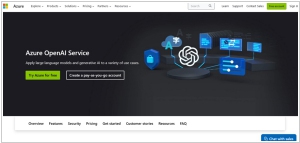
Microsoft has officially announced the general availability of ChatGPT, which can now be accessed through the Azure OpenAI Service. This service, tailored for enterprises, offers a fully managed platform with additional governance and compliance features to ensure businesses can leverage OpenAI's technologies effectively. ChatGPT now joins a lineup of other OpenAI-developed systems already provided via the Azure OpenAI Service, including the text-generating GPT-3.5, code-generating Codex, and image-generating DALL-E 2. Microsoft maintains a strong collaborative partnership with OpenAI, marked by substantial investments and an exclusive agreement to commercialize OpenAI's AI research.
2022. Google Cloud will shutter its IoT Core service next year
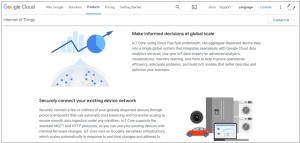
This week, Google Cloud made the announcement that it will be discontinuing its IoT Core service, allowing customers a one-year timeframe to transition to a partner for the management of their IoT devices. Google believes that relying on partners to handle the process on behalf of customers is a more effective approach. A Google spokesperson explained, "Since the launch of IoT Core, it has become evident that our customers' needs can be better met by our network of partners who specialize in IoT applications and services. We have diligently worked to offer customers migration options and alternative solutions, and we are providing a year-long transition period before discontinuing IoT Core."
2022. Google expands Vertex, its managed AI service, with new features
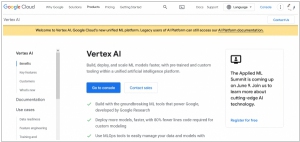
Roughly one year ago, Google introduced Vertex AI, a managed AI platform designed to expedite the deployment of AI models for businesses. Today, Google has announced upcoming enhancements for Vertex, including a dedicated server for AI system training and the introduction of "example-based" explanations. As Google has consistently emphasized, Vertex offers the advantage of integrating Google Cloud services for AI within a unified user interface (UI) and application programming interface (API). According to Google, notable customers such as Ford, Seagate, Wayfair, Cashapp, Cruise, and Lowe's utilize Vertex to construct, train, and deploy machine learning models within a single environment, effectively transitioning from experimental stages to production.
2021. Microsoft launches Azure Container Apps, a new serverless container service
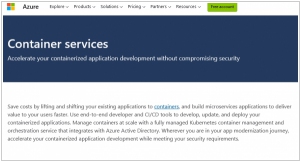
Microsoft has announced the preview launch of Azure Container Apps, a new serverless container service that is fully managed and complements their existing container infrastructure services such as Azure Kubernetes Service (AKS). Azure Container Apps is designed for microservices and offers rapid scaling based on HTTP traffic, events, or long-running background jobs. It shares similarities with AWS App Runner, one of Amazon's serverless container services focused on microservices. Google also provides container-centric services, including Cloud Run, which is their serverless platform for running container-based applications.
2019. Google Cloud gets a new family of cheaper general-purpose compute instances
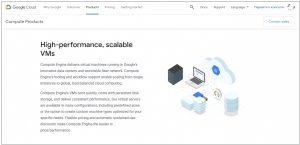
Google Cloud has recently introduced its new E2 family of compute instances, specifically designed for general-purpose workloads. These instances offer a significant cost advantage, delivering savings of approximately 31% when compared to the existing N1 general-purpose instances. Moreover, the new system incorporates enhanced intelligence in terms of VM placement, granting the flexibility to migrate them to alternative hosts as required. To achieve these advancements, Google has developed a custom CPU scheduler. Unlike comparable alternatives offered by other cloud providers, E2 VMs from Google can sustain high CPU loads without artificial throttling or complex pricing structures. It will be intriguing to witness benchmark tests that compare the performance of the E2 family against similar offerings from AWS and Azure.
2019. Microsoft launched cloud APIs for form and handwriting recognition
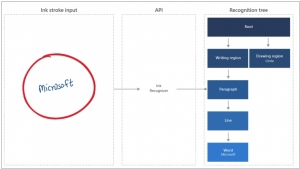
Microsoft has unveiled a range of new cognitive services on its Azure Machine Learning cloud platform, catering to various document-related needs and offering enhanced capabilities. Among these services are the Ink Recognizer and Form Recognizer, which enable the conversion of handwritten text and paper documents into digital text and data. Additionally, the Conversation Transcription service facilitates the transformation of phone dialogues into text, with the ability to identify the author of each phrase. Another notable addition is the Personalizer service, which delivers personalized recommendations to website and online store visitors based on their behavioral patterns. Furthermore, Microsoft has introduced a user-friendly visual interface for creating machine learning models, empowering marketers and other professionals to engage with machine learning. By simply uploading the database and specifying the desired predictive parameter, users can explore the potential of machine learning in their respective fields.
2019. Microsoft launched own Windows Virtual Desktop service
Microsoft has recognized the potential of offering virtual desktop services independently, despite its prior reliance on cloud partners. The introduction of the Windows Virtual Desktop service, now accessible for companies on the Microsoft Azure cloud platform, allows the installation of Windows, Office, and other software licenses on the cloud instead of employees' individual computers. Consequently, employees can access and work with their software through a virtual desktop. This approach offers several advantages. Firstly, it enables even older Windows 7 computers to operate efficiently while providing the benefits of Windows 10. Secondly, it offers convenience to administrators in terms of creating and maintaining new work environments while ensuring security measures. The Windows Virtual Desktop service itself is free, with costs incurred only for additional Azure resources consumed, such as memory and CPU time.
2018. Microsoft Azure gets new high-performance storage options
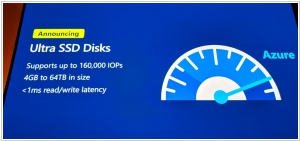
Microsoft is introducing a range of new storage options for Microsoft Azure, with a particular focus on scenarios that require high disk performance. One notable addition is the public preview of Azure Ultra SSD Managed Disks. These drives are designed to deliver extremely low latency, making them well-suited for workloads that demand quick response times. Additionally, Standard SSD Managed Disks have transitioned from preview to general availability within just three months. Moreover, Azure now offers expanded storage capacities of 8, 16, and 32 TB across all storage tiers, including Premium and Standard SSD, as well as Standard HDD. Another new addition is Azure Premium Files, which is currently in the preview stage. This service is also SSD-based and aims to provide improved throughput and reduced latency for SMB operations within Azure Files, a familiar cloud storage solution that uses the standard SMB protocol.
2018. Google Cloud adds new applications performance monitoring tool
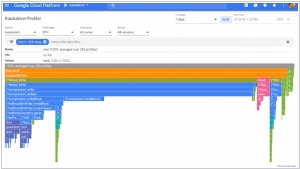
Google has introduced a significant addition for developers working on applications within the Google Cloud Platform. They now have access to a comprehensive suite of application performance management tools known as Stackdriver APM. This suite empowers developers to directly track and address issues within the applications they have built, eliminating the need to rely solely on operations teams. The underlying idea is that developers, being intimately familiar with the code, are best positioned to comprehend the signals emanating from it. Stackdriver APM consists of three primary tools: Profiler, Trace, and Debugger. While Trace and Debugger were already available, the integration of Profiler allows all three tools to seamlessly collaborate in identifying, monitoring, and resolving code-related issues.

